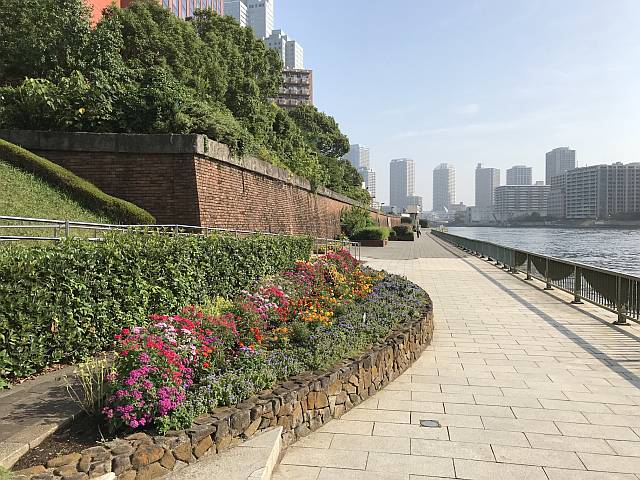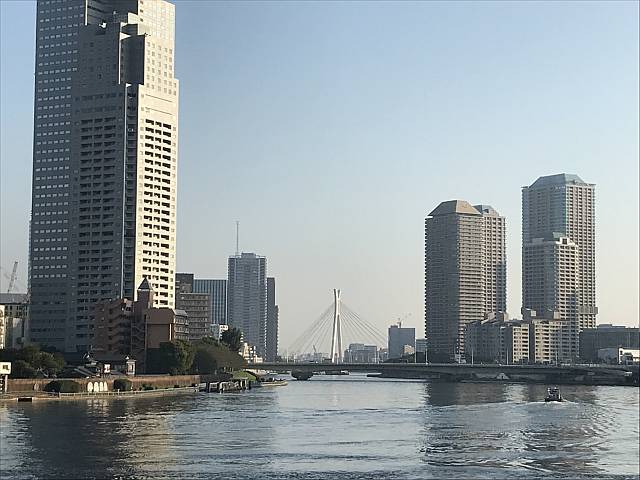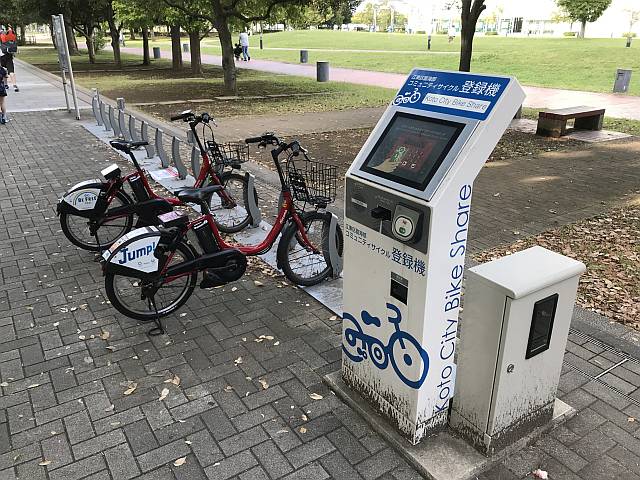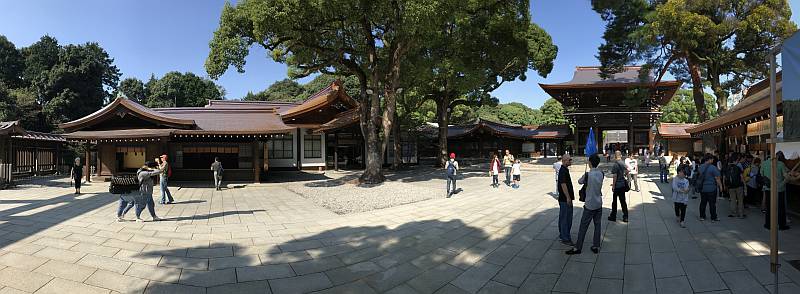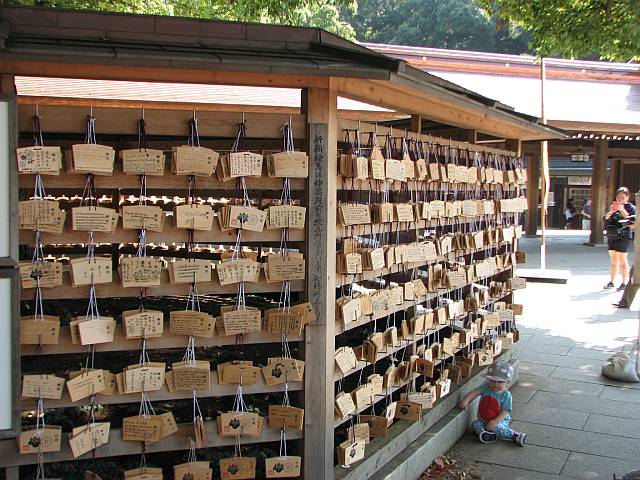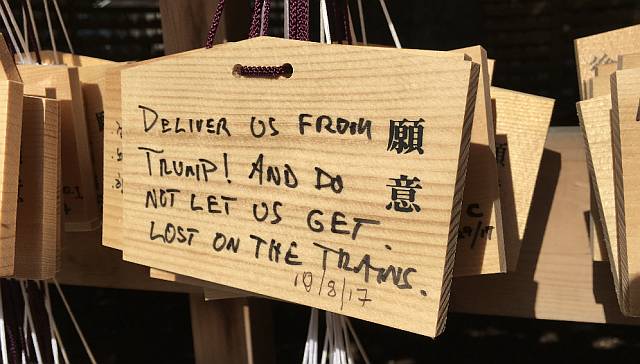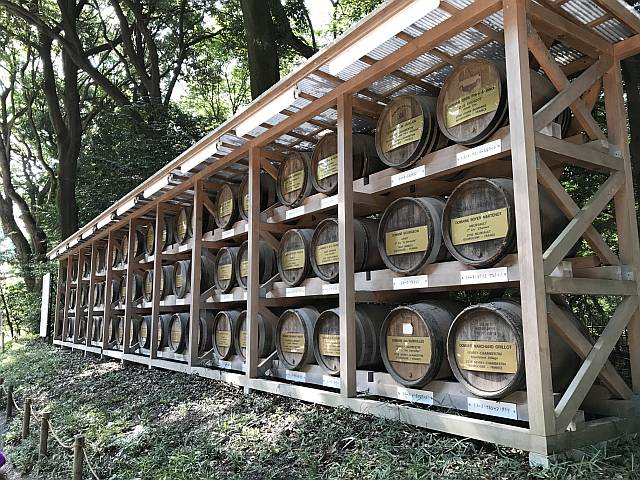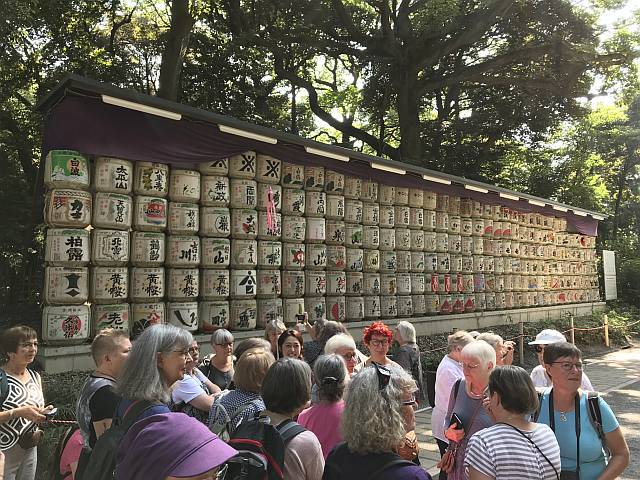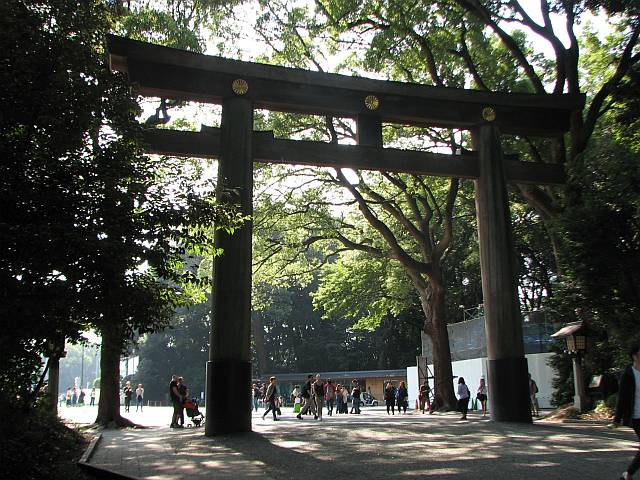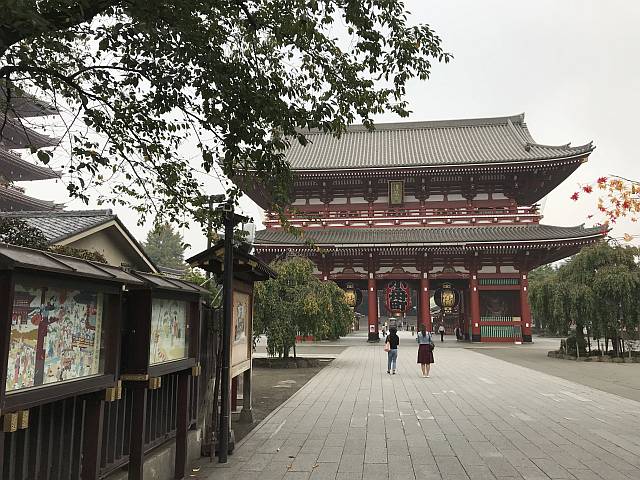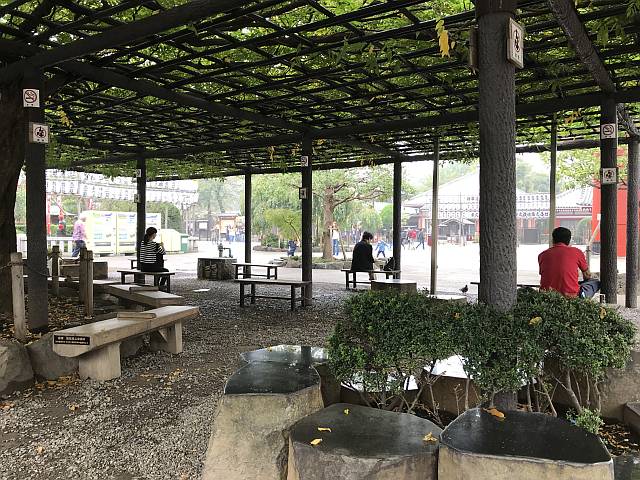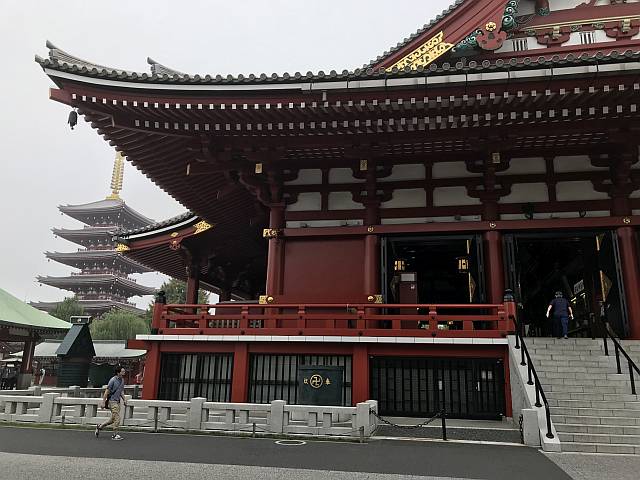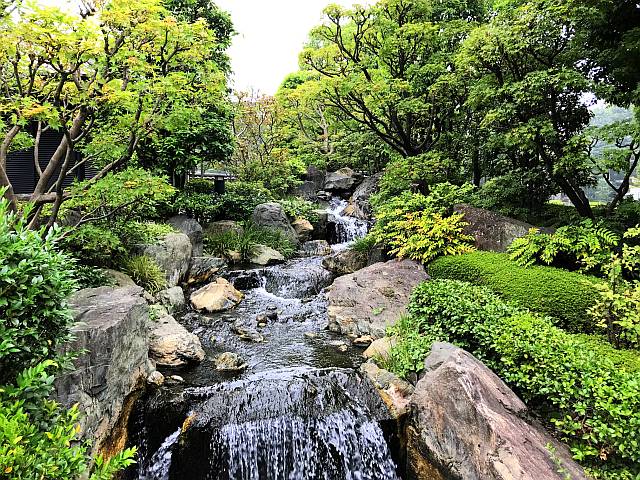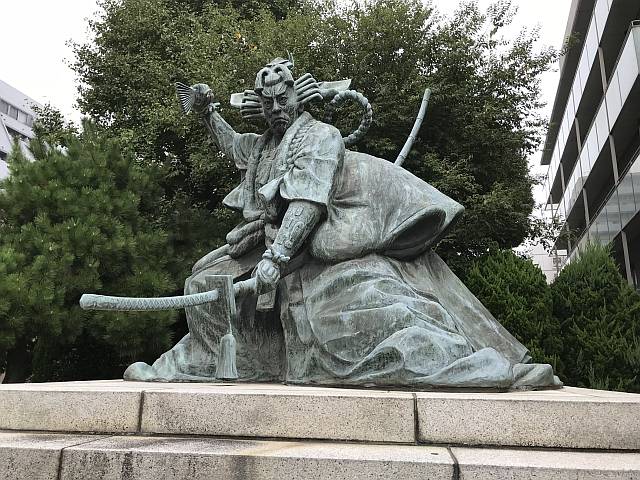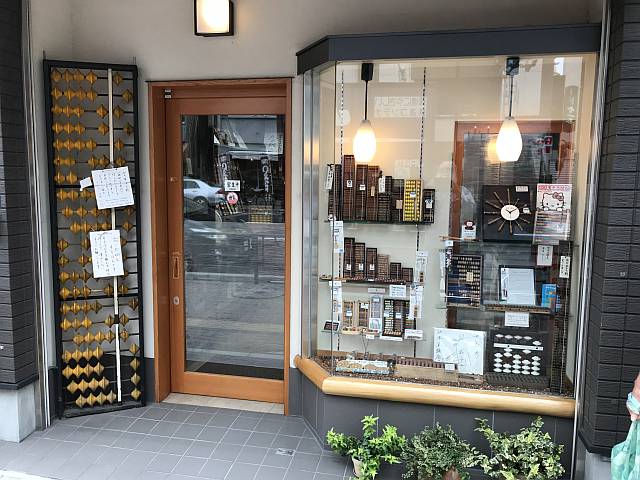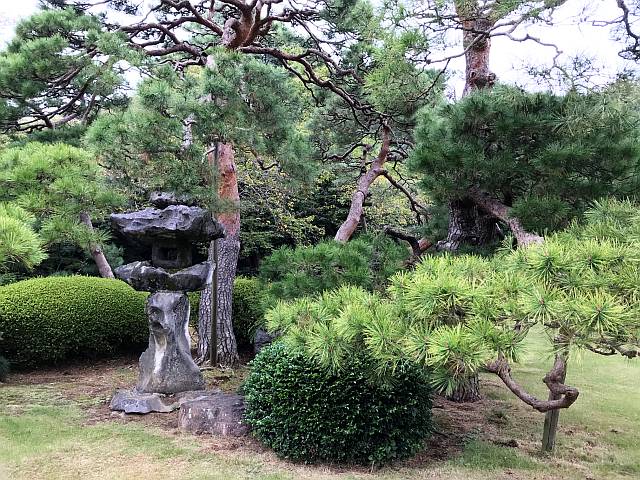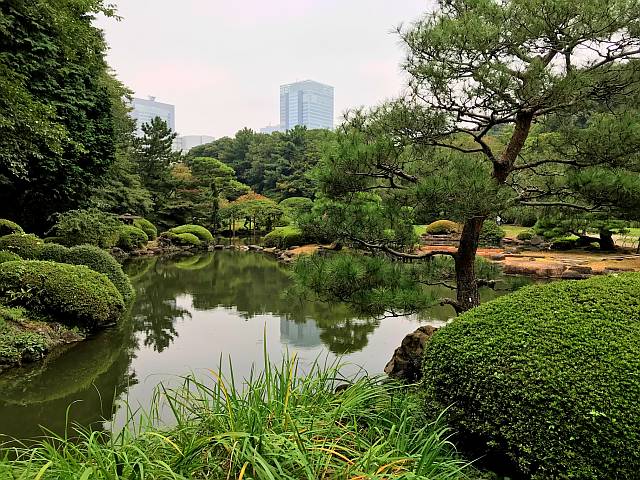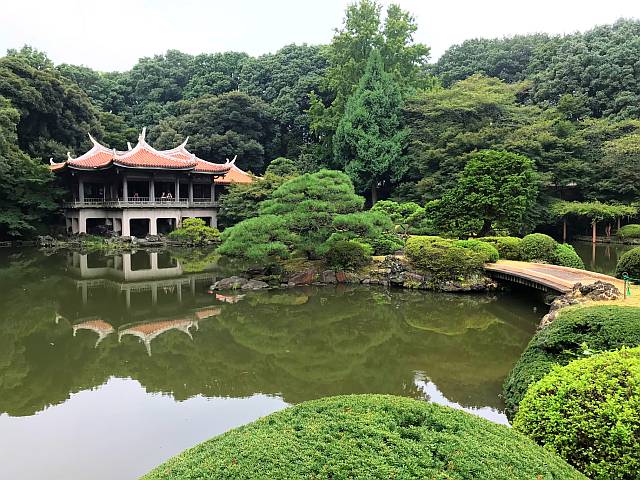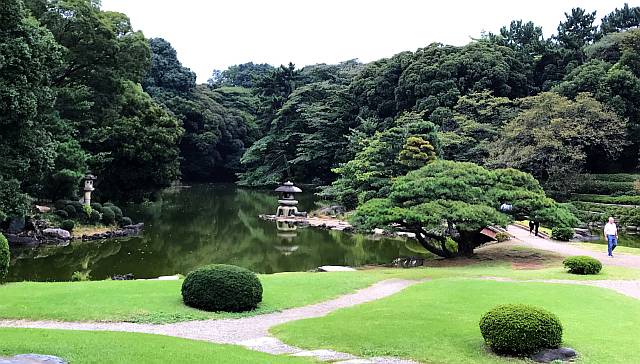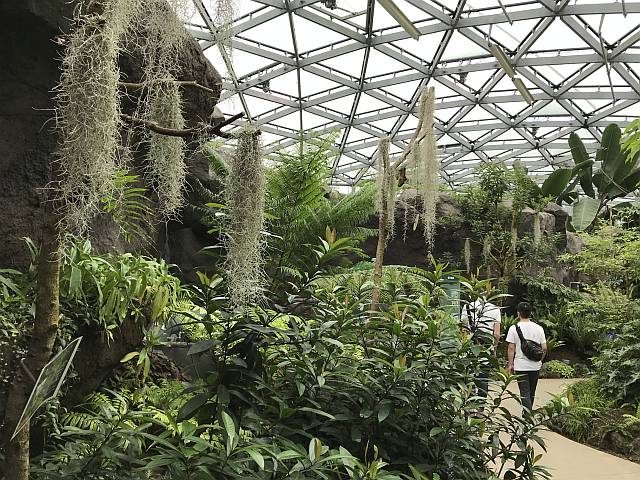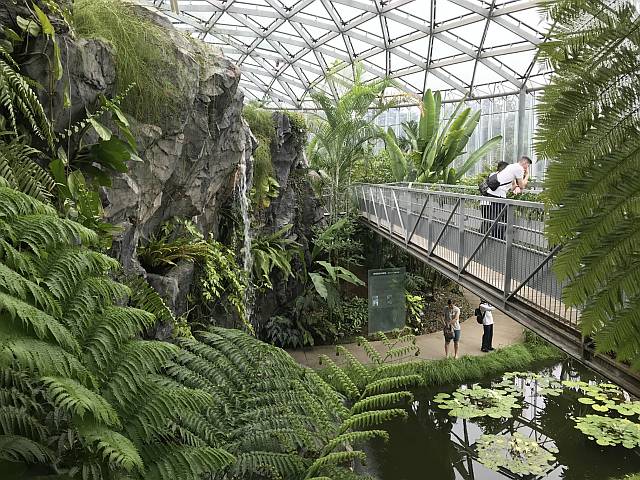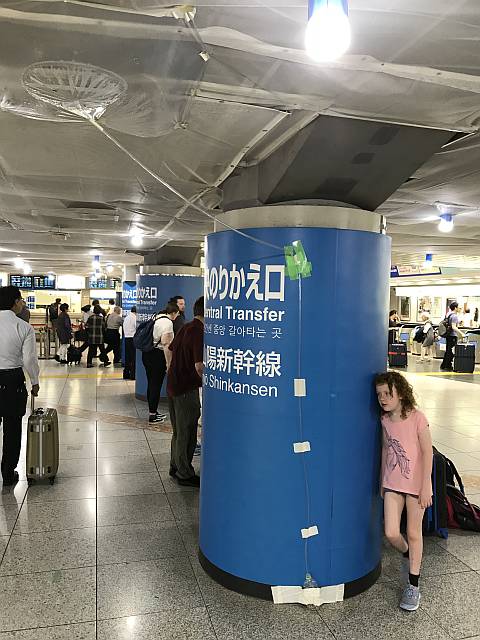|
Our group
The adults, from the left: my daughter Julia, my wife Denece, son-in-law Shayne, son Ken, daughter-in-law Claire; the children: Julia and Shayne's daughters Anna (aged 7) and Beth (5), Ken and Claire's daughter Adelaide, aged 20 months. (There is a photo of me on the Osaka page.)The photo was taken shortly after we all met-up in Tokyo. Julia and her family had flown from Perth into Tokyo's other airport, Haneda, so we didn't meet in Japan until finding our AirBnB accommodation in Tokyo itself.
While Tokyo was very densely populated (greater Tokyo is one of the biggest cities in the world, with 38 million people – about half again as many as in the whole of Australia) we were pleasantly surprised at the number of little parks nearby; this one was only a couple hundred metres from our accommodation.
Our accommodation and this park were within easy walking distance of Tsukiji subway station.
Photo taken 2017/10/09
|
Scattered gardens
This photo was taken a few metres from the group photo above. There were similar garden beds along the bank of the Sumida River and in several places away from the river near our Tokyo accommodation.
Photo taken 2017/10/12
|
Low lying Tokyo
A view along the Sumida River from a bridge close to our accommodation.The river surface is sea level. Notice how low the surrounding area is; it will be very susceptible to sea level rise that will come with climate change (as will Osaka and the delta areas of Vietnam).
Photo taken 2017/10/10
|
|
|
Ebike hire in the Tokyo area
Bicycles are a popular way of getting about in Japan, and electric-assisted (Ebikes) are common.Unlike Australia, where there are commonly multiple sprockets on both the driving and driven ends of the chain, those bicycles in Japan that had gears usually had a single sprocket at the driving end with multiple sprockets only on the back wheel. Perhaps half of the bicycles I saw did not have gears at all; quite probably because most Japanese cities are built on flat, or near-flat, ground. See my note on the geomorphology of Japan.
It was common to see a mother and child on an ebike, and sometimes there was a child both in front of, and behind, the mother. Unlike in Vietnam, I don't think I ever saw anyone carrying a large or heavy load on a bicycle in Japan.
Also see my section on bicycles in Japan.
Photo taken 2017/10/09

